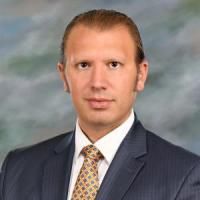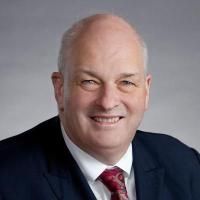A comparative analysis of the prevalence and characteristics of cervical malalignment in adults presenting with thoracolumbar spine deformity based on variations in treatment approach over 2 years.
Date
2016-08
Journal Title
Journal ISSN
Volume Title
Repository Usage Stats
views
downloads
Citation Stats
Abstract
Purpose
Characteristics specific to cervical deformity (CD) concomitant with adult thoracolumbar deformity (TLD) remains uncertain, particularly regarding treatment. This study identifies cervical malalignment prevalence following surgical and conservative TLD treatment through 2 years.Methods
Retrospective analysis of a prospective, multicenter adult spinal deformity (ASD) database. CD was defined in operative and non-operative ASD patients according to the following criteria: T1 Slope minus Cervical Lordosis (T1S-CL) ≥20°, C2-C7 Cervical Sagittal Vertical Axis (cSVA) ≥40 mm, C2-C7 kyphosis >10°. Differences in rates, demographics, health-related quality of life (HRQoL) scores for Oswestry Disability Index (ODI) and Scoliosis Research Society Questionnaire (SRS-22r), and radiographic variables were assessed between treatment groups (Op vs. Non-Op) and follow-up periods (baseline, 1-year, 2-year).Results
Three hundred and nineteen (200 Op, 199 Non-Op) ASD patients were analyzed. Op patients' CD rates at 1 and 2 years were 78.9, and 63.0 %, respectively. Non-Op CD rates were 21.1 and 37.0 % at 1 and 2 years, respectively. T1S-CL mismatch and cSVA malalignment characterized Op CD at 1 and 2 years (p < 0.05). Op and Non-Op CD groups had similar cervical/global alignment at 1 year (p > 0.05 for all), but at 2 years, Op CD patients had worse thoracic kyphosis (TK), T1S-CL, CL, cSVA, C2-T3 SVA, and global SVA compared to Non-Ops (p < 0.05). Op CD patients had worse ODI, and SRS Activity at 1 and 2 years post-operative (p < 0.05), but had greater 2-year SRS Satisfaction scores (p = 0.019).Conclusions
In the first study to compare cervical malalignment at extended follow-up between ASD treatments, CD rates rose overall through 2 years. TLD surgery, resulting in higher CD rates characterized by T1S-CL and cSVA malalignment, produced poorer HRQoL. This information can aid in treatment method decision-making when cervical deformity is present concomitant with TLD.Type
Department
Description
Provenance
Subjects
Citation
Permalink
Published Version (Please cite this version)
Publication Info
Jalai, Cyrus M, Peter G Passias, Virginie Lafage, Justin S Smith, Renaud Lafage, Gregory W Poorman, Bassel Diebo, Barthélemy Liabaud, et al. (2016). A comparative analysis of the prevalence and characteristics of cervical malalignment in adults presenting with thoracolumbar spine deformity based on variations in treatment approach over 2 years. European spine journal : official publication of the European Spine Society, the European Spinal Deformity Society, and the European Section of the Cervical Spine Research Society, 25(8). pp. 2423–2432. 10.1007/s00586-016-4564-7 Retrieved from https://hdl.handle.net/10161/28418.
This is constructed from limited available data and may be imprecise. To cite this article, please review & use the official citation provided by the journal.
Collections
Scholars@Duke

Peter Passias
Throughout my medical career, I have remained dedicated to improving my patients' quality of life. As a specialist in adult cervical and spinal deformity surgery, I understand the significant impact our interventions have on individuals suffering from debilitating pain and physical and mental health challenges. Spinal deformity surgery merges the complexities of spinal biomechanics with the needs of an aging population. My research focuses on spinal alignment, biomechanics, innovative surgical techniques, and health economics to ensure value-based care that enhances patient outcomes.

Christopher Ignatius Shaffrey
I have more than 25 years of experience treating patients of all ages with spinal disorders. I have had an interest in the management of spinal disorders since starting my medical education. I performed residencies in both orthopaedic surgery and neurosurgery to gain a comprehensive understanding of the entire range of spinal disorders. My goal has been to find innovative ways to manage the range of spinal conditions, straightforward to complex. I have a focus on managing patients with complex spinal disorders. My patient evaluation and management philosophy is to provide engaged, compassionate care that focuses on providing the simplest and least aggressive treatment option for a particular condition. In many cases, non-operative treatment options exist to improve a patient’s symptoms. I have been actively engaged in clinical research to find the best ways to manage spinal disorders in order to achieve better results with fewer complications.
Unless otherwise indicated, scholarly articles published by Duke faculty members are made available here with a CC-BY-NC (Creative Commons Attribution Non-Commercial) license, as enabled by the Duke Open Access Policy. If you wish to use the materials in ways not already permitted under CC-BY-NC, please consult the copyright owner. Other materials are made available here through the author’s grant of a non-exclusive license to make their work openly accessible.
